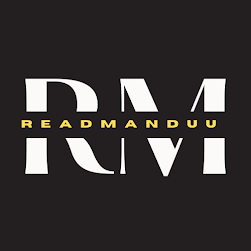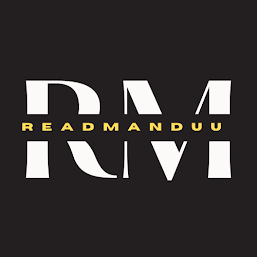We are happy to welcome you to our blog post on interesting facts about money. Did you know that the first form of currency was cowrie shells, which were used as a medium of exchange as far back as 3,000 years ago?
These small, shiny shells were once considered a valuable commodity and were traded for goods and services all over the world. Fun facts about money.
However, cowrie shells aren't the only fascinating fact about money. The history, functions, and peculiarities of money will be covered in more detail in this post. We have some interesting and surprising facts to share, ranging from the smallest coin in the world to the largest currency denomination ever printed.
Let's begin our exploration of the fascinating world of money without further ado!
II. Fun Fact #1: The first form of currency was cowrie shells
Cowrie shells have been used as money since the dawn of civilization in Africa, Asia, and the Pacific island nations. The rarity and beauty of these shells made them valuable, and they were frequently used as a sign of wealth and social standing. Cowrie shells were frequently used in religious ceremonies and rituals because they were thought to have spiritual or supernatural powers in many cultures. Fun facts about money.
For many centuries, cowrie shells were a widely used form of currency and were exchanged for a wide range of goods and services. They could be exchanged individually for smaller purchases or were frequently strung together and used as a kind of primitive "coinage.". Cowrie shell prices varied by region and shell type, with some species being worth more than others.
III. Fun Fact #2: The largest denomination of currency ever printed was the 100,000 peso bill in Argentina
The bill for 100,000 pesos is unquestionably unusual in the world of money. Argentina's government issued this enormous denomination in the 1980s, a time of extreme economic unrest and hyperinflation. The government printed money in larger and larger denominations, with the 100,000 peso bill being the largest, in an effort to keep up with the quickly rising prices.
The plan, sadly, did not succeed, and the peso's value kept falling. Many Argentines lost their life savings as a result of the 100,000 peso bill's nearly worthless condition. Despite this, the 100,000 peso bill is still a unique and interesting piece of money and is now a collectible. Fun facts about money.
As you can see, a representation of the Argentine independence hero General Jose de San Martin is on the bill. The Buenos Aires Independence Monument is shown on the bill's reverse side. Despite its enormous face value, the 100,000 peso bill is now only worth a small portion of what it was because of the ongoing economic problems in the nation.
Even though cowrie shells aren't used as money anymore, they are still highly valued culturally in many parts of the world. Cowrie shells are still used in some African nations' traditional clothing and jewelry, for instance, and are also widely used as collectibles and decorative items. Cowrie shells were thus the first type of money that people used for trade.
IV. Fun Fact #3: The world's smallest coin is the one-cent coin of the country of Krakow in Poland
The Krakow, Poland, one-cent coin is an incredibly small unit of currency. This coin, which is smaller than a dime and has a diameter of just 10.5 mm, is frequently referred to as the "smallest coin in the world.". Although it is small, the Krakow cent coin is fully legal tender and can be used in transactions just like any other coin. Fun facts about money.
On one side of the coin is a depiction of a dragon, which represents Krakow, and on the other is the city's coat of arms. Around the coin's rim, the words "MIASTA KRKOWA" (City of Krakow) are engraved.
Krakow's one-cent coin may be the tiniest coin in existence, but it is not the only one. The 10-cent coins from Monaco, the Netherlands, and Canada are some of the other contenders for the title. A U is smaller than each of these coins. S. the Krakow one-cent coin and are about the size of a dime.
Despite their diminutive size, these coins are a distinctive and fascinating feature of the world of money because they are used for significant purposes in their respective nations.
V. Fun Fact #4: There is a town in Germany that has its own currency
Yes, you read that correctly. The town of Wörgl in Germany has its own currency. During the 1930s Great Depression, Wörgl, an Austrian town in the Tyrol region, experimented with its own currency.
The town was experiencing economic hardships at the time, including high unemployment and a lack of investment. In response, Michael Unterguggenberger, the mayor of Wörgl, suggested a novel solution: the establishment of a regional currency known as the "Wörgl Schnapp. ".
The Wörgl Schnapp was created to boost the regional economy and promote local commerce. The town's public works provided security for the currency, which could be used to pay for goods and services from participating retailers. The currency was also intended to be self-sustaining, with a small portion of each transaction taken out of circulation and put into a fund that would be used for public works projects. Fun facts about money.
The test was successful, and the Wörgl Schnapp contributed to a rise in the local economy and a drop in unemployment. Local currencies are a fascinating example of how communities can take charge of their own economic future because they have since been adopted in other towns and cities all over the world. This town's use of its own currency is thus an intriguing example.
VI. Fun Fact #5: The first known use of paper money was in China over 1,000 years ago
In China, where paper money was first used during the Tang Dynasty (618–907), it has been in use for more than a thousand years. The high demand for trade at the time and the high cost of metal production resulted in a coin shortage for the Chinese government. In response, the government started issuing "jiaozi," or paper money, to promote trade and lessen the reliance on metal money.
Government-issued jiaozi had metal reserves backing them up, which could be exchanged for the amount of the note. In China, paper money became a widely used form of payment for goods and services as well as taxes and salaries.
Over time, the use of paper money spread to other Middle Eastern and European nations, and it has since taken over as the main form of payment in the majority of the world. Paper money has a long and fascinating history in China, where it is still a significant component of the financial system.
Paper money has had a significant cultural and historical impact in China in addition to its usefulness as a means of exchange. Numerous Chinese banknotes have been produced over the years to commemorate significant occasions and honor illustrious figures from the country's past. They are decorated with intricate patterns and exquisite artwork. The growth of China's printing industry, which was vital to the country's dissemination of knowledge and culture, has also been connected to the use of paper money. As a result, China has a lengthy and fascinating history with paper money. Fun facts about money.
VII. Conclusion
We've covered a wide range of fascinating and unusual facts about the world of money, from the first form of money—cowrie shells—to the largest denomination of currency ever printed—the 100,000 peso bill—and the world's smallest coin—the one-cent coin of Krakow.






.png)

0 Comments
If you have any doubts please let me know.